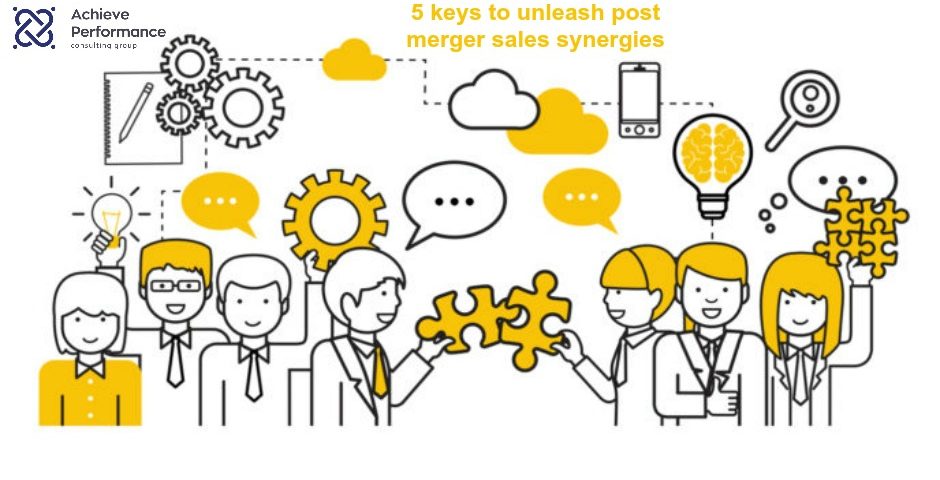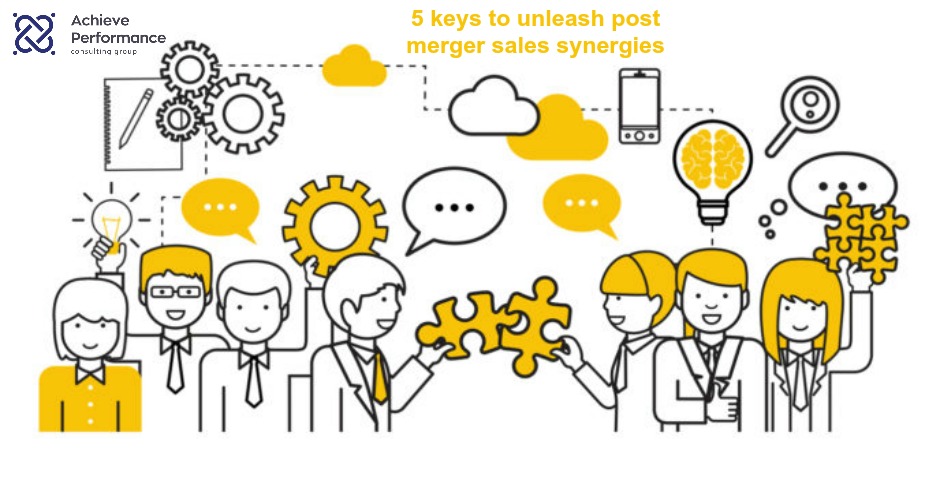5 keys to unleash post merger sales synergies

9 Habits That Lead To Terrible Decision-Making

Is Your Performance Evaluation System Helping or Hindering a Talent-Rich Culture?


5 keys to unleash post merger sales synergies
”You will now sell together”. In many a merger, the sales teams are introduced to each other with this brief message. And with that it is assumed that the sales teams will come together automatically and sell as one. After all sales is the same everywhere and salespeople ought to understand each other even if they are from different companies. Such a simplistic approach however, tends to overlook the complex dynamics in a merger. Challenges could include:
- Mergers typically create anxiety in the salesforce.
- Back office systems supporting sales may require reconstruction.
- Selling should go on and customer care cannot slacken, even as the merger is underway.
- Top notch salespeople and premium customers become targets of competition.
1. Communicate continuously
Mergers often create anxiety as people worry about how the changes will impact them and where they would fit in. The best antidote to anxiety is regular communication of reliable information.
Communicate early and do it regularly - Share as much information as possible with your salespeople. Frequently, many post merger companies do the exact opposite. It would be wrong to assume that sharing information might discourage the teams or that they will anyway come to know on their own.
Involve salespeople in the integration process - The usual assumption is that salespeople are most effective when their focus is on Customers, revenue targets and compensation. So merging companies sometimes reason that they shouldn’t bother the salespeople with organisational matters. This assumption can be a serious mistake. Saleswork depends heavily on how sales is structured in a company. Confusion on the sales structure, customer engagement rules and operational details can be devastating to sales effectiveness. More than in any other situation, in a merger, the salespeople should have a good insights into the organisational and operational changes so that they are well equipped to soothe Customer anxieties, if any, and ensure retention of all key clients. It is also important to constantly update the salesforce on internal developments, personal changes, account relations and compensations to win and retain their trust.
2. Articulate a compelling vision
Communicate a compelling vision of the exciting post merger outcomes in terms of changes to core business, client relations, financial results and customer experience. Use this as an opportunity to create a context to set meaningful goals for the sales teams towards a seamless transition.
To be effective, ensure that the post merger vision is articulated by the managers in direct conversation with their teams and is not relegated to impersonal mails.
3. Set the pace early
Getting off the block quickly can make a big difference to post merger sales synergies. A slow start is not only uninspiring, it can neutralise the benefits of the merger. It has been shown that sales organisations that manage a swift integration are more likely to reap the benefits of the merger earlier. Setting the pace early on, will mean:
Plan and place sales representatives in favourable positions notwithstanding the organisational glitches which are a normal part of any integration.
Sales managers and executives to step in and make sure that salespeople have the tools necessary to succeed, till the sales support systems integrate and stabilize.
4. Build on quick wins
During the first months following a merger, it is absolutely critical for the sales teams to crack some large deals. This will help the merged sales-force experience and buy into the benefits of ’hunting together as a bigger pack’. Following actions can make this happen:
Facilitate victories – The preparation leading up to early successes may not exactly represent how the sales operations will work post the merger. But you need to facilitate victories to build momentum. If this means allocating resources that you normally wouldn’t, it is still a worthwhile investment.
Support your top salespeople – Identify your top salespeople and support them through the transactions they are working on. Line up the technical and product development resources necessary to help their transactions come through. And consider what performance incentives might strengthen your mission. When we are https://www.linkedin.com/made to feel “wrong” (by our own internal processing or externally by others), we self-judge and know that others will judge us. This affects us deeply and in effect, we become the failure, fearful of its punitive consequences: being fired, disregarded for promotions and special projects, and may even be required to “fall on our sword.”
Leverage the ’small wins’ – Other than large transactions, you should also identify some ’small wins’ that the merged team can celebrate. Typically, these are sales that both merging companies have a history of executing with a high success rate. These transactions, though not large, provide an accessible entry point for your salespeople into the new structure that is emerging, which will eventually shape the identity of your sales organization.
5. Prepare to improvise
Sales teams need back office systems to be in place. They require well-oiled processes, especially in areas like IT and Finance, in order to successfully execute deals. Inadequacies in support systems can adversely affect order execution capabilities of the sales force. Unfortunately, in the early days of a merger, back office systems may not be hundred percent perfect as they need time to integrate and stabilize the new sales architecture. So how do you maintain the early sales momentum even though the support system may not be fully ready yet?
Improvise to keep the sales engine running, till support systems stabilize. Consider the following actions:
Find temporary solutions –The objective is to bridge the gap between the support and sales teams till back office systems are up and running full throttle. They could be makeshift structures but they should be good enough to last the entire transition period.
Solutions should cover all critical sales requirements – Sales reps should be equipped to make forecasts, secure pricing approvals, handle exceptions or priority orders. This is just a sample of important requirements. The list can be longer for companies based on size and complexity of operations.
Ensure solutions are available from the start – Over time, as support systems stabilize, the makeshift structures may get phased out, but they need to be available right from the start of the merger process so that sales are insulated from merger related hiccups.
A carefully planned merger of sales teams can unleash synergies that are much bigger than the sum of its parts
Read more
Source: Mercuri International



